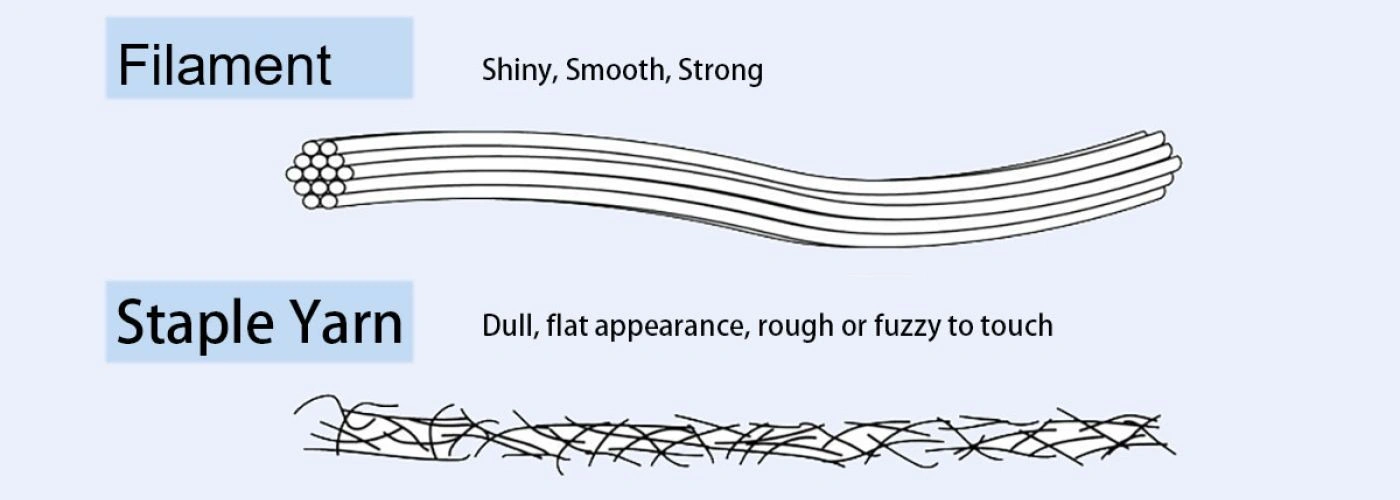
Filament VS Staple fiber, which one is preferred and why?
20 February 2024
The preference between filament and staple fibers depends on the specific requirements of the textile product being manufactured, including its intended use, desired texture, durability, and cost-effectiveness. Each type of fiber has distinct characteristics that make it suitable for different applications. Here's a comparison highlighting the advantages and disadvantages of each:
Filament Fibers
Filament Fibers Advantages:
- Strength and Durability: Filament fibers, being long continuous strands, generally offer greater strength and durability compared to staple fibers. This makes them suitable for applications requiring high tensile strength, such as ropes and durable clothing.
- Smoothness and Sheen: Fabrics made from filament fibers can have a smoother surface and a natural sheen, making them ideal for luxurious apparel and linens.
- Uniformity: Filament fibers can produce fabrics with a more consistent appearance due to their uniform length, which is beneficial for high-quality, fine textiles.
Filament Fibers Disadvantages:
- Less Comfort for Certain Applications: For some applications, particularly those requiring high breathability and moisture absorption (like sportswear or casual wear), filament fibers might not be as comfortable as staple fibers.
- Cost: Depending on the type of filament fiber, the production costs can be higher, especially for synthetic filaments that require complex manufacturing processes.
Staple Fibers
Staple Fibers Advantages:
- Versatility and Blendability: Staple fibers can be easily blended with other fiber types to create fabrics with combined properties of different materials, enhancing functionality, comfort, or aesthetic appeal.
- Breathability and Moisture Absorption: Fabrics made from natural staple fibers (like cotton or wool) are highly breathable and excellent at moisture absorption, making them ideal for clothing.
- Softness and Comfort: Staple fibers tend to create fabrics that are soft to the touch, offering superior comfort for everyday wear.
Staple Fibers Disadvantages:
- Inconsistency and Pilling: Fabrics made from staple fibers may show more inconsistency in texture and are more prone to pilling due to the shorter fiber lengths.
- Less Durability: Compared to filament fibers, staple fibers generally produce less durable fabrics, as the shorter fibers may break or wear out more easily over time.
Preference and Application
The preference between filament and staple fibers is not about which is universally better but which is better suited to a specific application. For instance:
- High-Performance and Technical Textiles: Filament fibers are often preferred for their strength, durability, and specific functional qualities (e.g., resistance to chemicals, moisture-wicking capabilities).
- Everyday Clothing and Textiles Requiring Softness and Comfort: Staple fibers are favored for their softness, comfort, and natural breathability, making them ideal for casual wear, bed linens, and towels.
Ultimately, the choice between filament and staple fibers will be guided by the end-use requirements, cost considerations, and desired fabric characteristics.
 Whatsapp:
Whatsapp: